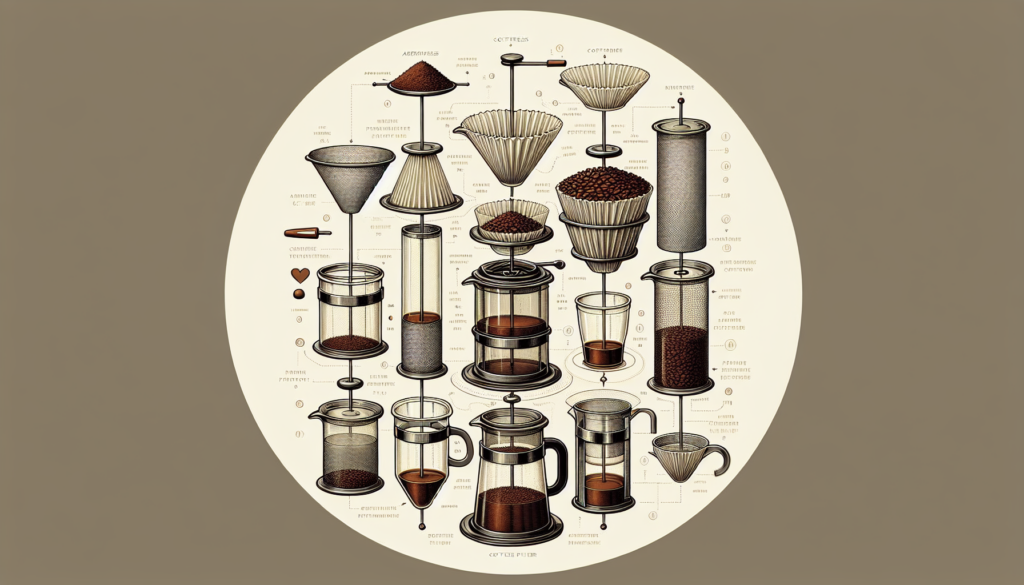Deciding between Aeropress vs French Press for your daily coffee? This article dives into the key differences, from brewing methods to flavor profiles, and helps you choose the best option for your taste and convenience.
AeroPress vs French Press
- AeroPress is the speedy superhero of coffee-making, delivering a smooth cup in under 2 minutes, while French Press is the classic, leisurely philosopher that values the art of slow brewing.
- When it comes to grind size, AeroPress prefers a medium-fine texture (like a good loaf of sandwich bread), while French Press loves the coarse vibe (think of it as beach sand).
- If you’re an eco-warrior, French Press wins the ‘green’ award with its reusable filter, while AeroPress offers hassle-free cleanup that allows you to be lazy without guilt.
AeroPress and French Press: An Overview
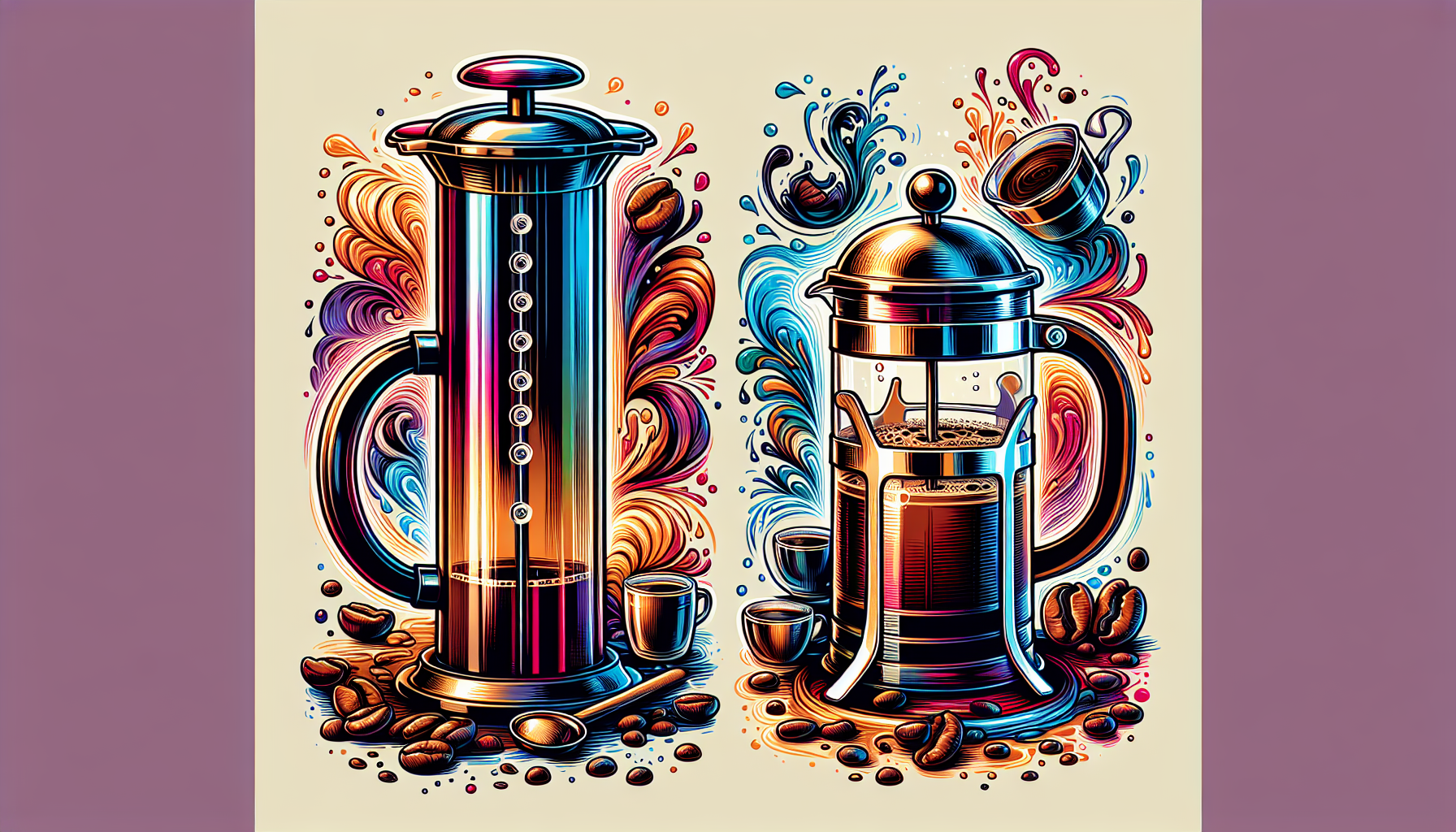
Ah, the eternal debate between AeroPress and French Press! These two brewing devices have made quite an impact on coffee culture worldwide. The AeroPress, with its rise in recent years, offers a user-friendly design and quick brewing process that many coffee drinkers love. On the other hand, the classic French Press, has been a staple among coffee enthusiasts since the 1950s, known for its rich, full-bodied flavor and classic design.
Both brewing methods appeal to different preferences. The AeroPress is celebrated for its ease of cleanup and low bitterness in the brewed coffee, while the French Press coffee is loved for its robust and immersive flavor experience.
Whether you’re a fan of the clean, smooth taste of AeroPress coffee or the bold, rich flavors of French Press coffee, there’s something for everyone in the world of coffee brewing methods.
Brewing Process Comparison
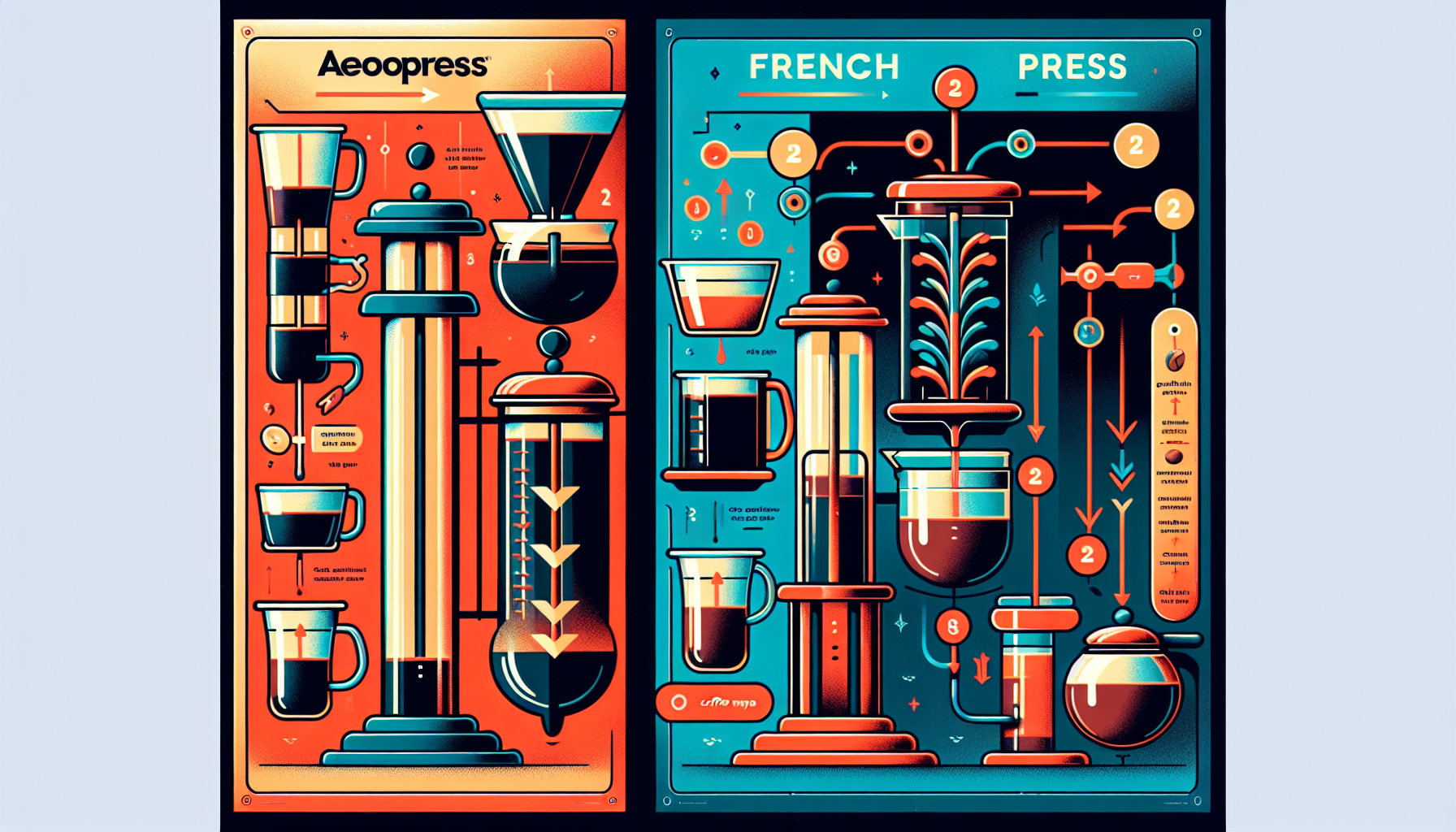
The brewing process is the heart and soul of coffee making. It’s what transforms those humble coffee grounds into the magical elixir we crave every morning. AeroPress and French Press each have their own unique brewing processes that result in distinct coffee experiences.
So, let’s dive into the details and see how the magic happens with each method.
AeroPress vs. French Press Brewing Process
Brewing coffee with an AeroPress is like conducting a symphony – precise, harmonious, and oh-so-rewarding. The AeroPress uses a piston-style, pressure-based method that combines immersion and pressure techniques to brew coffee. You start by using about 9 grams of finely ground coffee per cup and adjusting the coffee-to-water ratio between 3:1 and 4:1.
Once you’ve added hot water and allowed the coffee to steep briefly, it’s time for the grand finale – the plunge! In just 1-2 minutes, you’ll have a clean and smooth cup of coffee, thanks to the quick brewing process of the AeroPress. The pressure applied during the plunge helps extract the flavors efficiently, minimizing the risk of over-extraction and bitterness.
Quick, efficient, and perfect for a fast caffeine fix.
French Press Brewing Process
Brewing coffee with a French Press is a bit like slow cooking – it’s all about letting the flavors develop over time. The French Press relies on the principle of immersion, where the coffee grounds steep in hot water for an extended period. You’ll need a coarser grind to prevent clogging the mesh filter and ensure a smooth brewing process.
The steps are straightforward: add coarsely ground coffee to the French Press, pour hot water, and let it steep for about four minutes. Once steeped, press the plunger slowly and steadily to separate the coffee grounds from the liquid.
The result? A rich, full-bodied cup of coffee that’s perfect for savoring on a lazy morning.
Grind Size and Coffee Grounds
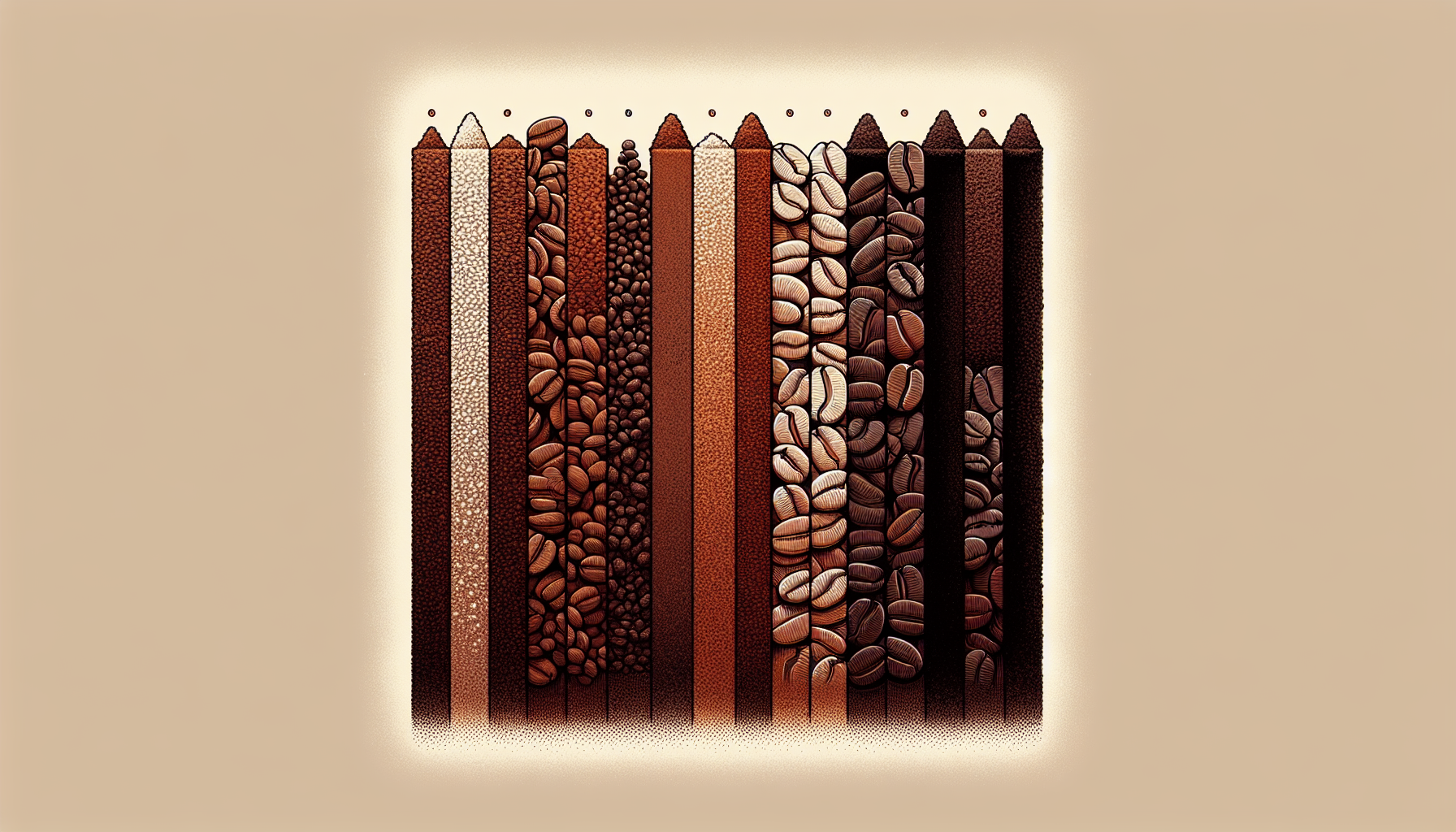
Grind size is a crucial factor in brewing coffee, influencing everything from flavor extraction to the ease of brewing. Whether you’re using an AeroPress or a French Press, getting the grind size right is key to achieving that perfect cup.
Let’s explore the optimal grind sizes for each method and why they matter.
Optimal Grind Size for AeroPress
A medium-fine grind works best for the AeroPress, allowing efficient flavor extraction while preventing clogging. A grind that is too fine can make it challenging to press water through the filter, resulting in a frustrating experience.
Stick to medium-fine, and you’ll be rewarded with a clean and flavorful cup making coffee.
Optimal Grind Size for French Press
For French Press, a coarse grind is better. It minimizes sediment and prevents a gritty texture in your coffee. A fine grind can lead to over-extraction, resulting in a bitter and acidic cup.
A coarse grind helps achieve a balanced and enjoyable brew, delivering that rich, full-bodied flavor French Press coffee is known for.
Flavor Profiles

Ah, the flavor – the true essence of why we love coffee. AeroPress and French Press each bring their own unique flavor profiles to the table, influenced by their brewing designs brew methods and processes.
Let’s delve into the distinct characteristics of each method to help you decide which flavor experience suits your taste preferences.
AeroPress Flavor Profile
AeroPress coffee offers a clean, bright, and versatile experience. The use of a paper filter removes most oils and sediment, resulting in a cleaner cup with significantly reduced acidity. This gentler brew is easier on sensitive stomachs and enhances flavor clarity.
Overall, AeroPress offers a unique flavor experience with cleanliness, brightness, and versatility. The flavors are distinctly defined, allowing you to taste the nuanced characteristics of the coffee beans. It’s an espresso machine perfect for those who appreciate a smooth and refined cup.
French Press Flavor Profile
French press coffee is rich, full-bodied, and bold. Its immersion brewing method and metal mesh filter allow oils and fine particles to pass through, creating a heavier body and pronounced flavors. This results in a robust and textured mouthfeel that many coffee lovers adore. French presses are a popular choice for those who appreciate this brewing technique and style.
If you’re a fan of strong, bold coffee with a classic feel, French Press is the way to go. The flavors are deep and intense, with satisfying richness in each sip. It’s ideal for those who love a hearty and immersive coffee experience.
Filters and Coffee Oils
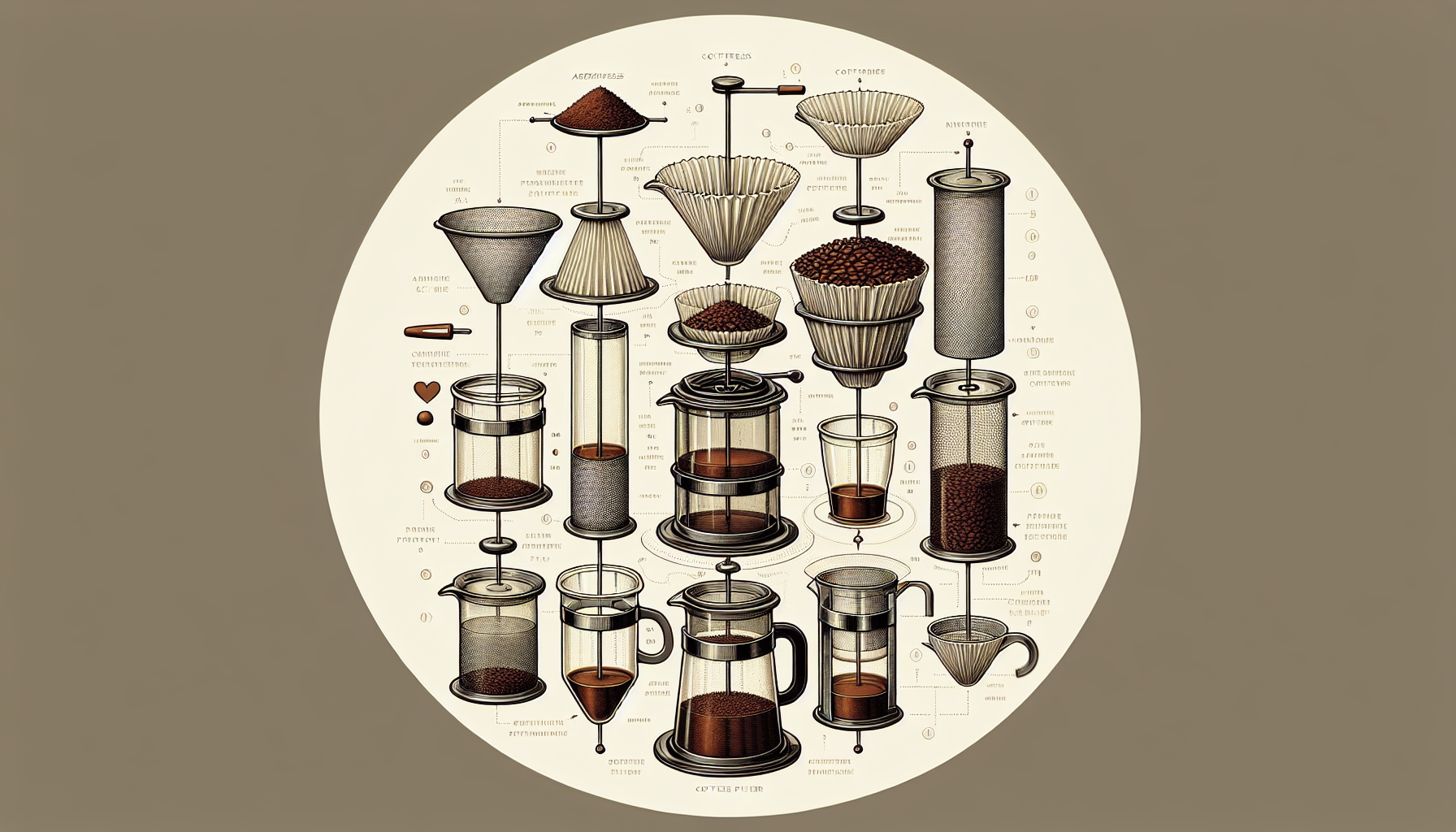
Filters play a significant role in the brewing process, affecting both the flavor and texture of the coffee. AeroPress uses disposable paper filters, which remove most oils and sediment, resulting in a cleaner cup. Using two or three paper filters with coarsely ground coffee can provide an even cleaner brew. There are also reusable paper filter options available for the environmentally conscious brewer.
The French Press uses a metal mesh filter, allowing more oils and fine particles finely ground coffee to pass through. This method contributes to the rich, full-bodied flavor and thicker texture of French Press coffee. While the metal filter doesn’t provide as clean a cup as paper filters, it captures the essence of the coffee beans, delivering a robust and satisfying brew.
Versatility and Customization
One of the joys of brewing coffee is experimenting with different techniques and flavors. Both AeroPress and French Press offer unique opportunities for creativity and customization.
Let’s explore how these two brewing devices stack up in terms of versatility.
AeroPress Versatility
The AeroPress is a playground for coffee enthusiasts who love to tinker with brewing variables. The AeroPress provides a high degree of control over various brewing parameters, including grind size, water temperature, brew time, and coffee-to-water ratio. This flexibility allows you to experiment with different flavors and strengths, creating a variety of coffee beverages, from espresso-like shots to iced coffee.
One of the standout features of the AeroPress is its ability to make cold brew coffee in just a couple of minutes. Whether you’re in the mood for a hot cup or a refreshing, making cold brew coffee, the AeroPress has got you covered. It’s perfect for those who enjoy a personalized and experimental coffee experience.
French Press Flexibility
While the French Press may not offer the same level of control as the AeroPress, it excels in delivering consistent results and retaining the pure coffee flavor. Adjusting steeping times can significantly alter the flavor profile, adding versatility in its own right.
The French Press can also brew cold brew and froth milk, adding to its versatility. It’s ideal for coffee lovers who appreciate rich and bold flavors and those who prefer a straightforward and reliable brewing method. If you’re looking for a consistent and robust coffee experience, the French Press is a solid choice.
Portability and Convenience
Portability and convenience are key factors for brewing coffee on the go. AeroPress and French Press each have their own strengths and weaknesses in this area.
Here’s how they compare.
AeroPress Portability
The AeroPress serves as an ultimate travel companion for coffee lovers. Its lightweight and compact design makes it easy to carry and use anywhere. Weighing in at just around 6.5 ounces, the AeroPress is perfect for those who need their coffee fix while on the move. The AeroPress Go includes a mug and carrying case, enhancing travel convenience.
Whether camping, traveling, or needing a portable coffee maker for the office, the AeroPress provides significant advantages for on-the-go brewing. Designed for easy portability, it ensures you never compromise on coffee quality, no matter where you are.
French Press Portability
While beloved for its rich coffee flavor, the French Press is not as travel-friendly as the AeroPress. Its bulkier and heavier design makes it less convenient for on-the-go coffee drinkers. Many French Press models are constructed from glass or light plastic, making them prone to breaking during travel.
For those who prefer home brewing, the French Press is a great option. However, for a serious brewing device that can withstand travel, the AeroPress is the better choice. The French Press is better suited for home use due to its bulkiness and fragility.
Cleaning and Maintenance
Choosing a coffee brewing method requires considering cleaning and maintenance.
Let’s compare how AeroPress and French Press stack up in terms of ease of cleaning and maintenance.
Cleaning AeroPress
The AeroPress has a clear advantage when it comes to cleaning. Its design allows for quick and easy cleanup, requiring just a simple rinse after use. Clean-up involves wiping, popping out the coffee grounds, and giving it a quick rinse.
Minimal effort keeps your AeroPress in top condition.
Cleaning French Press
Cleaning a French Press is a more involved process. You’ll need to manually dispose of the coffee grounds, carefully disassemble the press, and thoroughly rinse out all accumulated residue. Regularly inspect the mesh filter for damage and replace it as needed to ensure effective brewing.
Though requiring more effort, proper care ensures your French Press delivers delicious coffee for years.
Environmental Impact
Regarding environmental impact, the French Press has an edge over the AeroPress. Using a metal mesh filter, the French Press eliminates the need for disposable paper filters, reducing waste.
For eco-conscious coffee lovers, the French Press offers a more sustainable brewing option.
Choosing Your Brew Method
Choosing between AeroPress and French Press often boils down to personal preferences and lifestyle. If convenience and versatility are your priorities, the AeroPress might be the best choice. It brews coffee quickly, typically within 1-2 minutes, offering a hassle-free experience compared to the more involved process of using a French Press. Its portability also makes it perfect for on-the-go coffee enthusiasts.
On the other hand, if you enjoy a rich, full-bodied coffee experience and often brew multiple cups at once, the French Press is ideal. It’s also ideal for those who appreciate a classic brewing method and don’t mind extra cleanup.
Ultimately, your choice should align with your taste preferences and brewing habits.
Summary
In the battle of AeroPress vs. French Press, both brewing methods have their unique strengths. The AeroPress offers quick, clean, and versatile brewing, perfect for coffee lovers on the move. Meanwhile, the French Press method provides a rich, full-bodied flavor that’s hard to beat for those who enjoy a robust coffee experience. Whichever method you choose, both can deliver a delicious cup of coffee tailored to your preferences. Happy brewing!
Frequently Asked Questions
Which method is quicker, AeroPress or French Press?
The AeroPress is like that friend who always shows up early to the party, brewing coffee in just 1-2 minutes, while the French Press is busy making small talk and takes about 4 minutes. So, if you want your caffeine fix fast, go with the AeroPress!
Can I use AeroPress for cold brew coffee?
Absolutely, you can whip up cold brew with an AeroPress faster than you can say “I need my caffeine fix!” Just remember, it’s not a magic wand, but it’ll definitely give you a refreshing jolt in no time!
Which method is better for travel?
If you want to travel like a pro without hauling a suitcase full of coffee gear, the AeroPress takes the cake for portability! It’s as lightweight and compact as your best excuse for skipping the gym.
How do the flavor profiles of AeroPress and French Press differ?
AeroPress coffee is like a crisp, fresh breeze, while French Press is that cozy blanket you snuggle under on a chilly day—both are warm and inviting, just catering to different vibes! So, if you’re feeling bright and zesty, go AeroPress; if you want to go big or go home, French Press it is!
Which method has a lower environmental impact?
If you’re looking to save the planet one cup at a time, the French Press is your eco-friendly barista buddy—no paper filters needed, just pure coffee bliss! Go ahead, sip sustainably!
